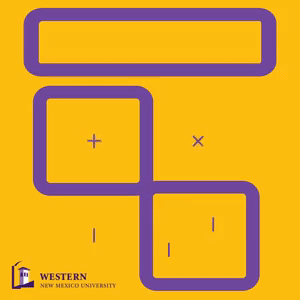By Mary Alice Murphy
New Mexico Department of Information Technology Secretary John Salazar started off the webinar and said that U.S. Sen. Tom Udall and Congresswoman Xochitl Torres Small would address the attendees remotely.
"As one of the most rural states in the nation, we must find ways to collaborate to bring broadband to underserved areas," Salazar said. "We recently completed a survey. Even though the state has succeeded in expanding our broadband programs, there are still about 196,000 people and 126,000 businesses that are underserved in the state. According to our plan, we have about a $2 billion to $5 billion funding gap to reach everyone."
Throughout the presentation, broadband was described as having at least 10 megabytes per second speed available for download and at least 1 mbps for upload, so often speakers referred to 10/1.
Udall called in: "Thank you for the introduction, Secretary Salazar. The Covid-19 pandemic has made it clear that people need broadband to be able to work, to go to school and to get necessary services. New Mexico is 49th in the country in rural broadband access. The tribes have far less access. We must for once and for all expand broadband. The Navajos got $1 million to expand their telehealth services. The CARES Act Reconnect program put $23 million in rural broadband into Acoma Pueblo and in eastern New Mexico. I would like to see New Mexico take full advantage of all funding opportunities. The FCC's maps are not accurate and accurate maps are critical. We have made gains, but we still have a lot of work to do. During the pandemic when the only way students can learn is online, we have to make sure all students are connected. It's why I worked with other senators to introduce the Emergency Education Connections Act. This will ensure that all students have connections and devices. It will provide $4 billion to schools and libraries through the e-rate for hot spots. When remote education is critical, we can't continue to leave tribal communities out. They have even less access than other rural areas. We have to make sure we are upholding the federal trust to native treaties. We are also working on a discount for low-income households. We prevented LifeLine from being cut during the pandemic. If there is a time to close the digital divide, it's now."
Kendra Karp, director of the Office of Broadband, introduced the speakers.
A PDF of the slides during the presentations is attached at the bottom to give readers the details of each program. Also a YouTube video of the presentation is embedded.
All presentations included how to apply, who was eligible and sometimes how each application was scored.
Speakers included Chris Rys of the EDA (U.S. Economic Development Administration), who presented the CARES Act Funding and Broadband.
The next speaker was Bryan Boyle, deputy division chief of the Federal Communications Commission Telecommunications Access Policy Division. He presented an overview of the 1996 Telecommunications Act and the two programs he oversees, the Telecommunications (Telecom) Program and the Healthcare Connect Fund (HCF) Program.
The U.S. Department of Agriculture Rural Development Division's Distance Learning and Telemedicine Program and the Community-Oriented Connectivity Broadband Grant Program Community Connect and the Rural e-Connectivity Reconnect were presented by Brian Smith.
Ray Melton, business and cooperative programs director of the USDA Rural Business Development Grant Program, talked about the eligible applicants and eligible purposes for the program, and gave contact information.
The New Mexico Broadband Program's Gar Clarke, state geospatial information officer, talked about the state's broadband map, marking public WiFi parking lot hotspots, public facilities, structures, telecom resources and boundaries.
Torres Small addressed the group remotely.
"What an honor to work with Sen. Udall, my mentor, on his long-term dedication to broadband," Torres Small said. "For large numbers of Americans, COVID has made it so clear in the need for broadband, especially for schools and health care providers. I voted for several relief packages, including CARES, which many have addressed today. New programs such as COVID-19 telehealth have been crucial. It's a matter of if the funding reaches most rural communities. I also helped pass the comprehensive infrastructure funding, that takes on the need for rural broadband. COVID-19 showed this is a modern-day necessity, but we know it's also important for small businesses to thrive as others can succeed across the country. Last week the House passed HR2, the Moving Forward Act. This key legislation provides funding for the country's crumbling infrastructure. Also included is the Affordable Internet for All Act that I helped introduce last month with the House Rural Broadband Task Force. It provides $100 billion to bring high-speed broadband to rural areas across the country. Working with the task force over the past year, I have prioritized maps so that we get the funding to underserved areas that need it the most. The Broadband Data Act will invest $80 billion to deploy to serve underserved areas, like those that received funding for electricity in the 1940s. This needs bold funding for remote learning for schools. I ask you to use my office and all other resources in this meeting to meet the needs of rural areas to obtain broadband."
Several questions were posed. The first asked if the CARES funding can be used as a match for other programs. Smith said that if the program is federal, the CARES Act funding cannot be used as a match. "You cannot match federal funding with other federal funding."
Another questioner asked if some of the money could be used for computers or just broadband. Smith replied that some could be used for equipment but only for distance learning and telemedicine.
A question asked about when the next round 3 of Reconnect would occur. Smith said he thought around December or January.
A question about the deadline of July 13 for Rural Development funding might possibly be extended. Smith said he did not expect an extension and the next round would be next year in January or February.
Smith said electric cooperatives might be eligible for Reconnect and "the other program I didn't talk about, which will happen maybe in November or December. You need to know what funding is available in what buckets."
{pdf}mypdfs/Finalvs2_Webinar_Presentation.pdf{/pdf}








